
Łukasz Wyrzykowski
Lukasz Wyrzykowski (pron. Woo-cash Vi-zhi-kov-sky) is the Professor at the Astronomical Observatory of the University of Warsaw. He studied astronomy at the University of Warsaw and obtained his PhD in 2005 working under the supervision of prof. Andrzej Udalski and collaborating with the OGLE project. He spent one year as a research assistant at Tel Aviv University in 2003 and Manchester University in 2005. He then worked as a postdoctoral fellow in the Institute of Astronomy, University of Cambridge.
Lukasz Wyrzykowski (pron. Woo-cash Vi-zhi-kov-sky) is the Professor at the Astronomical Observatory of the University of Warsaw. He studied astronomy at the University of Warsaw and obtained his PhD in 2005 working under the supervision of prof. Andrzej Udalski and collaborating with the OGLE project. He spent one year as a research assistant at Tel Aviv University in 2003 and Manchester University in 2005. He then worked as a postdoctoral fellow in the Institute of Astronomy, University of Cambridge. In 2008 he joined the Gaia space mission project and has been involved in the mission since. His main contribution to Gaia was the design and construction of a near-real-time data processing pipeline alerting on astrophysical transient events detected by Gaia. In 2012 he moved to Warsaw, obtained his habilitation and in 2021 the full professorship. He was awarded prizes from the Polish government and the ministry of science and obtained numerous grants from both Polish, European and US institutions. In 2019 he was awarded the Senior Research Award by the Polish-Americal Fulbright Commission to travel to Las Cumbres Observatory in California and the University of California Santa Barbara. His scientific interests cover astrophysical transients like supernovae, tidal disruption events, RCrB-type stars and in particular, microlensing events, which he uses to study the population of black holes in the Milky Way and its halo. He is also interested in using machine learning techniques in astronomical big data analysis as well as the automatisation of astronomical data processing. He is also involved in new space activities, small satellites, satellite tracking and stratospheric balloons, in cooperation with Polish Space Agency and the European Space Agency. He is coordinating the ground-based follow-up network of telescopes under Horizon 2020 European Commission ORP grant and is the creator of the BHTOM. He is also involved in the forthcoming surveys and missions, including Vera Rubin Observatory/LSST, Ariel and Roman Space Telescope.
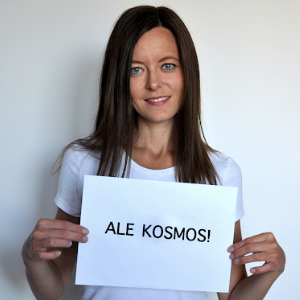
Milena Ratajczak
Milena Ratajczak, PhD, is a postdoctoral researcher at the Astronomical Observatory of the University of Warsaw. Her scientific interests include variable stars, binary systems evolution, and the search for compact objects. She is a member of the OGLE project, a large-scale photometric sky survey, as well as the Solaris team working on eclipsing binaries using a network of robotic telescopes. Within the ORP project, she coordinates the process of new telescopes joining the optical network.
Milena Ratajczak, PhD, is a postdoctoral researcher at the Astronomical Observatory of the University of Warsaw. Her scientific interests include variable stars, binary systems evolution, and the search for compact objects. She is a member of the OGLE project, a large-scale photometric sky survey, as well as the Solaris team working on eclipsing binaries using a network of robotic telescopes. Within the ORP project, she coordinates the process of new telescopes joining the optical network. As a member of the Gaia variable data processing group, she is involved in a citizen science project by the European Space Agency supporting the variable stars classification. Apart from scientific interests, Milena is actively involved in many outreach activities. She communicates science via public talks, writing popular science articles, reviewing books, and designing space-related games. She is also a Polish node representative of several international sci-comm projects and the Executive Secretary of the Polish Astronomical Society.
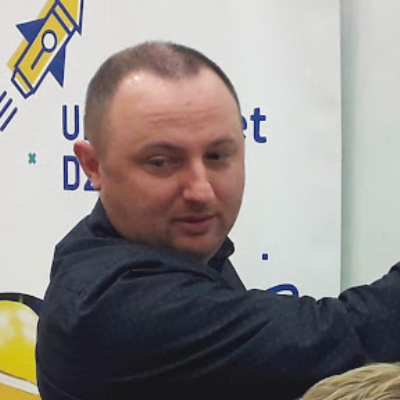
Paweł Zieliński
Paweł Zieliński, PhD, is a postdoctoral researcher at the Institute of Astronomy of the Nicolaus Copernicus University in Toruń. His scientific interests include time-domain astronomy and stellar astrophysics. In 2015 he received a PhD degree in astronomy at the Nicolaus Copernicus University in Toruń. The subject of the thesis was the determination of physical parameters of late-type stars suspected of hosting exoplanets.
Paweł Zieliński, PhD, is a postdoctoral researcher at the Institute of Astronomy of the Nicolaus Copernicus University in Toruń. His scientific interests include time-domain astronomy and stellar astrophysics. In 2015 he received a PhD degree in astronomy at the Nicolaus Copernicus University in Toruń. The subject of the thesis was the determination of physical parameters of late-type stars suspected of hosting exoplanets. After that, he was a postdoctoral researcher at Masaryk University in Brno (Czech Republic, for 1.5 years) and Warsaw University Astronomical Observatory (for 4 years). Since 2016 he is involved in the YETI project to detect and characterize young exoplanets in open clusters, and, since 2017, in the OPTICON grant as well. Paweł is an experienced observer with many successful observing programmes in OPTICON TNA, ESO, NOIRLab facilities and more than 150 nights on 1-meter-class telescopes conducting photometric, polarimetric and spectroscopic observations. He has been taking part in the follow-up of Gaia-alerted microlensing candidates in the search for lensing black holes. Within the ORP project, Paweł’s duties cover developing and testing the BHTOM tool for automatic processing and calibrating of observational data and observing (manually or remotely) interesting targets in the multi-wavelength domain. Besides science, Paweł is actively involved in numerous outreach activities. He is also the Treasurer of the Polish Astronomical Society.
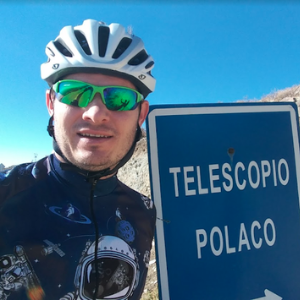
Mariusz Gromadzki
Mariusz Gromadzki (pron. Mar-you-sh Gro-ma-jhc-key) is the most serious member of the team and presents a very critical approach to the science according to the rule De omnibus dubitandum est. He received his Master’s degree in astronomy from the Nicolaus Copernicus University in Torun based on the work dedicated to studying fast variability of symbiotic stars. He was pursuing symbiotic stars research during PhD study at Nicolaus Astronomical Center in Warsaw but explored variability timescales increased from minutes and hours to years, decades and even centuries.
Mariusz Gromadzki (pron. Mar-you-sh Gro-ma-jhc-key) is the most serious member of the team and presents a very critical approach to the science according to the rule De omnibus dubitandum est. He received his Master’s degree in astronomy from the Nicolaus Copernicus University in Torun based on the work dedicated to studying fast variability of symbiotic stars. He was pursuing symbiotic stars research during PhD study at Nicolaus Astronomical Center in Warsaw but explored variability timescales increased from minutes and hours to years, decades and even centuries. After graduation, he shortly worked at the Space Research Centre in Warsaw and then moved to Chile. During almost five years at Universidad de Valparaíso, he joined the VVV survey science team, his tasks were related to searching high proper motion low mass stars and brown dwarfs towards extremely crowded Milky Way fields. He also followed-up candidates for the coolest and the oldest brown dwarfs in the Galaxy using near-IR facilities installed on the largest telescopes on the Earth. Since 2017 he is working at the Astronomical Observatory of the University of Warsaw. His main scientific interests are connected with spectroscopic studies of various types of astrophysical transients, including supernovae, optical counterparts of gravitational wave sources, tidal disruption events and other supermassive black hole-related transients. He is a member of the OGLE team, ePESSTO+ and ENGRAVE collaborations and is involved in the South African Large Telescope “Observing the Transient Universe” programme.

Przemysław J. Mikołajczyk
Przemysław J. Mikołajczyk is a PhD student in Astronomy at the University of Wrocław under the supervision of prof. Andrzej Pigulski as well as he is employed at the Astronomical Observatory of the University of Warsaw within the ORP grant. He completed his Bachelor’s and Master’s Theses at the University of Wrocław in 2015 and 2017, respectively, both under the supervision of Dr Zbigniew Kołaczkowski. His main scientific interests are variable stars, with an emphasis on hot upper-main sequence pulsators.
Przemysław J. Mikołajczyk is a PhD student in Astronomy at the University of Wrocław under the supervision of prof. Andrzej Pigulski as well as he is employed at the Astronomical Observatory of the University of Warsaw within the ORP grant. He completed his Bachelor’s and Master’s Theses at the University of Wrocław in 2015 and 2017, respectively, both under the supervision of Dr Zbigniew Kołaczkowski. His main scientific interests are variable stars, with an emphasis on hot upper-main sequence pulsators. He is also interested in chemical peculiarity among Slow B-type Pulsators. His day to day duties includes taking care of the photometric reduction pipeline in Black Hole TOM Portal as well as rejuvenation of the Ostrowik Observing Station of the University of Warsaw. Przemek is an avid observer, having had to observe internships at observatories in Chile, Greece and Italy in an addition to about 200 observing nights in Poland. He is a member of the All-sky Light Pollution Survey (ALPS). Privately, he enjoys philharmonic music, playing the guitar, petting his cat Emil and DIY activities.
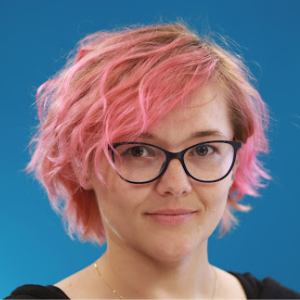
Monika Sitek
Monika Sitek has been the Director of the Instrumental and Didactical Station of the Warsaw University Astronomical Observatory in Ostrowik since 2017. She is an experienced user of the Warsaw 60-cm telescope as well as other telescopes in the world. She is responsible for the maintenance of the telescope and its site, and she is responsible for the training of new generations of observers.
Monika Sitek has been the Director of the Instrumental and Didactical Station of the Warsaw University Astronomical Observatory in Ostrowik since 2017. She is an experienced user of the Warsaw 60-cm telescope as well as other telescopes in the world. She is responsible for the maintenance of the telescope and its site, and she is responsible for the training of new generations of observers. She is involved in the OPTICON-RadioNET Pilot grant as a coordinator of the observing campaigns including students. For the last 10 years, she has also developed and conducted her own proprietary outreach astronomical programme for schools and groups of children.

Krzysztof Rybicki
Krzysztof Rybicki finished his Master and PhD studies at the Astronomical Observatory of the University of Warsaw, he is currently working as a postdoctoral fellow in the Department of Particle Physics and Astrophysics at Weizmann Institute of Science, Israel. His scientific interest revolves mostly around the Milky Way, its structure and stellar populations, so everything happening on the redshift z=0 is close to his heart.
Krzysztof Rybicki finished his Master and PhD studies at the Astronomical Observatory of the University of Warsaw, he is currently working as a postdoctoral fellow in the Department of Particle Physics and Astrophysics at Weizmann Institute of Science, Israel. His scientific interest revolves mostly around the Milky Way, its structure and stellar populations, so everything happening on the redshift z=0 is close to his heart. He is particularly interested in the fate of stellar remnants like neutron stars or black holes, but also somewhat cares about extrasolar planets – a topic slightly less mysterious, but maybe even more intriguing. The thing that is common for all these objects is that they are usually very faint (or emit no light at all), which is not a coincidence – Krzysztof’s main scientific expertise lies in the field of microlensing, a phenomenon that is very helpful in studying such objects. He is searching for microlensing events as a member of the OGLE team, but also within the Gaia mission, where he is involved in Gaia Science Alerts and DPAC CU7 operations.
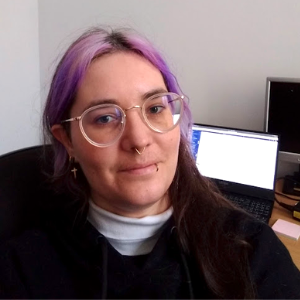
Katarzyna Kruszyńska
Katarzyna “Kasia” Kruszyńska is a PhD student in Astronomy at the University of Warsaw under the supervision of prof. Łukasz Wyrzykowski. Her main scientific interests are gravitational microlensing, black holes and other remnants of stellar evolution and Gaia’s capabilities of filling in the blanks in our understanding of the distribution of black holes in our Galaxy.
Katarzyna Kruszyńska (Kasia) is a PhD student in Astronomy at the University of Warsaw under the supervision of prof. Łukasz Wyrzykowski. Her main scientific interests are gravitational microlensing, black holes and other remnants of stellar evolution and Gaia’s capabilities of filling in the blanks in our understanding of the distribution of black holes in our Galaxy. She began her PhD course in 2017 and in 2019 became a member of the Data Processing and Analysis Consortium (DPAC) of Gaia, in Coordination Unit 7 related to variable stars. Her everyday tasks include searching for and modelling microlensing events observed by Gaia. She is a co-author of Gaia’s first catalogue of microlensing events. During her work, she receives a lot of moral support from her lovely cat, Fiodor.
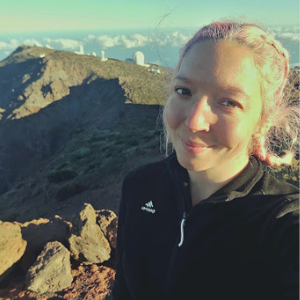
Nada Ihanec
Nada Ihanec is a PhD student at the Astronomical Observatory, the University of Warsaw under the supervision of prof. Łukasz Wyrzykowski. She obtained her Bachelor degree in Physics at the Faculty of Mathematics and Physics, University of Ljubljana, Slovenia and continued with a Master degree in Astrophysics from the School of Science, the University of Nova Gorica in Slovenia.
Nada Ihanec is a PhD student at the Astronomical Observatory, the University of Warsaw under the supervision of prof. Łukasz Wyrzykowski. She obtained her Bachelor degree in Physics at the Faculty of Mathematics and Physics, University of Ljubljana, Slovenia and continued with a Master degree in Astrophysics from the School of Science, the University of Nova Gorica in Slovenia. Her main scientific interest is in black holes and the transient sky, focusing on extragalactic transients, flares from the centres of distant galaxies, both quiescent and active. In addition, she is interested in electromagnetic counterparts to gravitational wave detections as well as microlensing events for which she is conducting photometric and spectroscopic observations with a global network of telescopes. She is a member of ePESSTO+ and ENGRAVE collaborations, as well as a member of the Gaia Data Processing and Analysis Consortium (DPAC). Between January and October 2021, she was a Student Support Astronomer at Isaac Newton Group of Telescopes on La Palma. Between January and December 2022 she is at the studentship program at European Organisation for Astronomical Research in the Southern Hemisphere (ESO) in Chile.
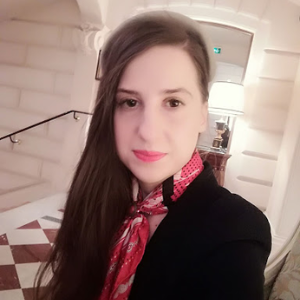
Algita Stankevičiūtė
Algita Stankevičiūtė is a PhD student at the Astronomical Observatory of the University of Warsaw under the supervision of prof. hab. dr. Łukasz Wyrzykowski. The main interests cover a broad range of science and engineering, including black hole exploration by gravitational microlensing phenomenon, involving present and future adaptive optics instruments, like ESO’s VLT (Very Large Telescope) instrument NaCo and ELT (Extremely Large Telescope) MICADO.
Algita Stankevičiūtė is a PhD student at the Astronomical Observatory of the University of Warsaw under the supervision of prof. hab. dr. Łukasz Wyrzykowski. The main interests cover a broad range of science and engineering, including black hole exploration by gravitational microlensing phenomenon, involving present and future adaptive optics instruments, like ESO’s VLT (Very Large Telescope) instrument NaCo and ELT (Extremely Large Telescope) MICADO. Apart from this, since 2019, she is a member of NYRIA – The Network of Young Researchers in Instrumentation for Astronomy and the European Photonics society. Besides her work in research, she is a professional fencer in epee and sabre, also a flying enthusiast.
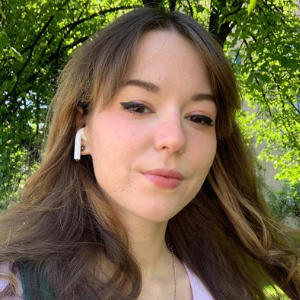
Maja Jabłońska
Maja Jabłońska (pron. Maya) has completed her MSc Degree at the Astronomical Observatory of the University of Warsaw. She is focusing on Gaia astrometric microlensing, with a focus on isolated stellar-mass black hole search. Her scientific interests cover a broad range of topics and one of her favourite things is the combination of astronomy and computer science, especially Machine Learning.
Maja Jabłońska (pron. Maya) is finishing her MSc Degree at the Astronomical Observatory University of Warsaw and in 2022 she commences the Ph.D. program in astronomy under the supervision of prof. Łukasz Wyrzykowski. She is focusing on astrometric microlensing, with a focus on isolated stellar-mass black hole search. Her scientific interests cover a broad range of topics and one of her favorite things is the combination of astronomy and computer science, especially Machine Learning. Apart from the main research, she is contributing to the BHTOM as the main developer and currently working on BHTOM2, experimenting with the newest neural networks in the spectral analysis, and helping with the organization of the conferences ML in PL (as the Association member and past edition leader) and EAS (as a volunteer). In summer 2022 she was awarded a studentship at ESO in Garching, Germany.

Zofia Kaczmarek
Zofia Kaczmarek is an PhD student at the University of Heidelberg. She has obtained an MPhil degree at Cambridge University working in the group led by Prof. Wyn Evans at the Institute of Astronomy. She has obtained her BSc in Astronomy degree from the University of Warsaw under the supervision of Prof. Łukasz Wyrzykowski, and she continues to collaborate closely with the Warsaw Gaia Team. Before starting university, she won the Polish Astronomical Olympiad twice and represented Poland three times at the International Olympiad on Astronomy and Astrophysics, including winning a silver and a bronze medal.
Zofia Kaczmarek is an MPhil student in the group led by Prof. Wyn Evans at the Institute of Astronomy, University of Cambridge. She has obtained her BSc in Astronomy degree from the University of Warsaw under the supervision of Prof. Łukasz Wyrzykowski, and she continues to collaborate closely with the Warsaw Gaia Team. Before starting university, she won the Polish Astronomical Olympiad twice and represented Poland three times at the International Olympiad on Astronomy and Astrophysics, including winning a silver and a bronze medal. She has also completed an internship in ESO in Garching on the topic of Searching for intermediate-mass black holes in 2020. Her scientific interests cover large sky surveys and searching for dark components of the Milky Way, including gravitational microlensing – especially astrometric microlensing – and stellar kinematics. Currently, she is working on the Gaia and VVV survey datasets. She is also interested in novel statistical and machine learning methods. In her free time, she enjoys outreach and science communication – she is currently involved in Polish Children’s Fund, Polish Astronomical Olympiad and CHaOS – Cambridge Hands-On Science. She is also a passionate arts&crafts enthusiast (including having made a cuddly, though sadly not life-sized, Gaia plushie), stargazer, and squirrelgazer.
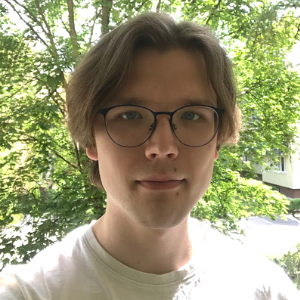
Kornel Howil
Kornel Howil is a BSc student in astronomy and computer science at the University of Warsaw. His main scientific interests are gravitational microlensing, machine learning, and data analysis. He has been working on modelling microlensing events from Gaia and follow-up observations. He has also been developing our Dark Lens Code (DLC) for predicting masses and distances for dark lenses.
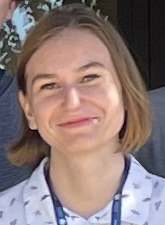
Uliana Pylypenko
Uliana is a Master student of astronomy at the Astronomical Observatory. She is working on controlling the follow-up observations at the network of telescopes, analysing their data and building light curves of microlensing events. Her research interests include studies of dark lenses using photometry and astrometry from Gaia.
Close Collaborators
Iwetta Achkar
Patrik Sivak
Piotr Trzcionkowski
Science Now
OGLE group
Gaia Science Alerts Group (Cambridge)
Gaia Variability Group (Geneva)
Nicolaus Copernicus University (Torun)
Vilnius University, Lithuania
University of Nova Gorica, Slovenia